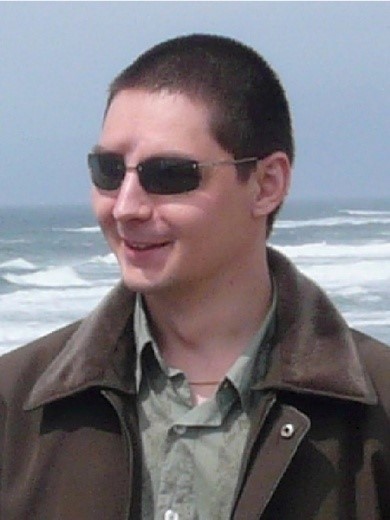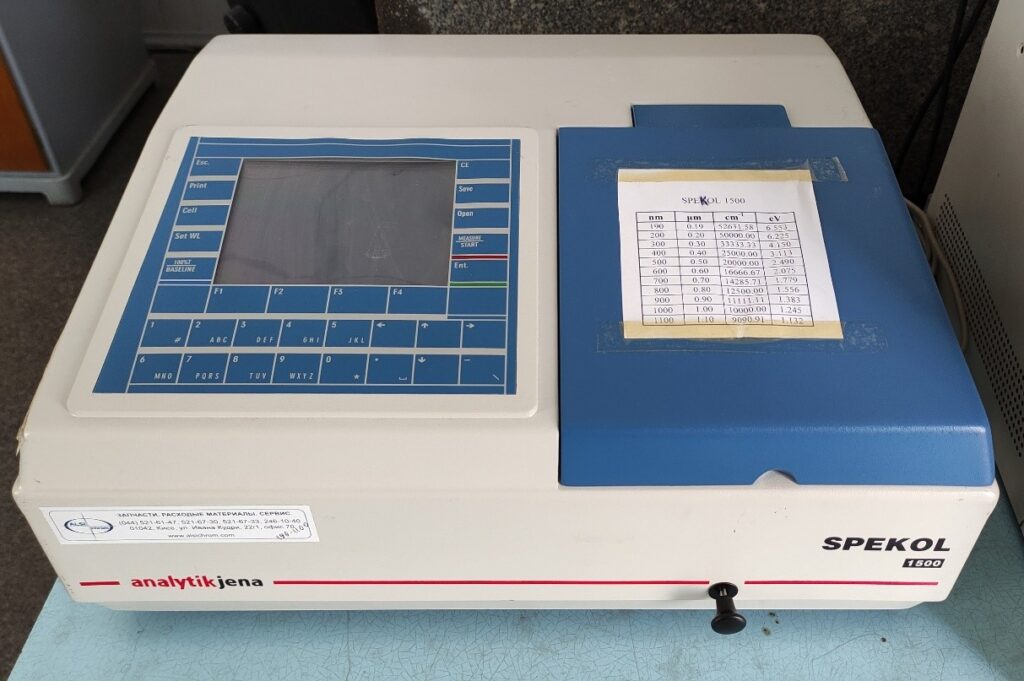
STARIK Serhiy Petrovych
Candidate of Technical Sciences, Head of Laboratory
Tel. +38(044)4329932
e-mail: s.starik@ukr.net
Main scientific directions
The main direction of the laboratory’s activity is the study of superhard mono-and polycrystalline materials, as well as diagnostics of tools made of polycrystalline superhard materials. The laboratory team works on the implementation of tasks of the scientific and research topics of the V.M. Bakul Institute of Materials Science of the NAS of Ukraine, institutions of the NAS of Ukraine, and provides services to other organizations of various departments when carrying out work on priority fundamental research and applied developments. The laboratory structurally consists of three groups: scanning electron microscopy and X-ray spectral analysis, optical spectroscopy, and a technological group for the application of carbon coatings.
To study the properties and characteristics of the materials under study, the laboratory is equipped with and uses the methods of scanning electron microscopy (SEM), energy-dispersive X-ray spectral analysis, ellipsometry and ultraviolet (UV) – visible – infrared (IR) spectroscopy. The laboratory also conducts research involving IR spectral mapping, disrupted total internal reflection, IR microspectroscopy, cathodoluminescence and optical microscopy. A significant achievement of the laboratory is the development of scientific foundations for the application of electron backscatter diffraction (Kikuchi diffraction) to study the structural and orientational characteristics of polycrystalline materials.
Study of the structure and spectral characteristics of superhard mono- and polycrystalline materials. Part of the Laboratory’s equipment is part of the Central Scientific and Technological Research Center for Materials Research and Nanodiagnostics.
The laboratory has developed a technology for obtaining carbon diamond-like amorphous film condensates and plasma-chemical treatment and modification of surface layers of various materials by chemical vapor deposition (CVD).
Scientific and practical seminars for Ukrainian scientists are regularly held at the laboratory with the involvement of specialists from Carl Zeiss and Oxford Instruments.
The laboratory is divided into the following groups:
- Electron microscopy;
- Optical diagnostics and spectroscopy;
- Vacuum unit for plasma chemical deposition of diamond-like carbon films;
- Vacuum unit for coating by physical deposition of materials.
1.Electron microscopy

Scanning electron microscope ZEISS EVO 50 XVP (Carl Zeiss, Germany), equipped with an X-ray spectrum analyzer Ultim Max 100 (Oxford Instruments) and a diffraction detector of reflected electrons. HKL CHANNEL 5. The magnification varies from 5x to 1,000,000x.
Detailed information about this equipment can be found on the website in the section dedicated to the Center for Collective Use of Scientific Instruments “Analytical Center for Research and Nanodiagnostics of Materials”
- Group employees:
- Tkach Vasyl Mykolayovych
- Belarusets Viktor Valeriyovych
- Kuzmenko Yevgen Fedorovych

A set of equipment is used, which includes an infrared Fourier transform spectrometer Nicolet 6700 and a Nicolet Continuum microscope (Thermo Fisher Scientific, USA) supplemented by an ultraviolet and visible spectrophotometer Spekol 1500 (Analytik Jena AG, Germany).
The working wavenumber ranges of the Nicolet 6700 spectrometer, which correspond to individual source/beam splitter/detector configurations: near-IR region – 25000-8500 cm-1, mid-IR region – 7400-600 cm-1, far-IR region 600-50 cm-1. With the help of additional attachments, it is possible to measure disturbed total internal reflection (ATR), diffuse scattering, specular reflection with an incidence angle range: 30° – 85° on this spectrometer.
The spectral range of the Nicolet Continuum microscope is 7400-500 cm-1, measurement modes – transmission, distorted total internal reflection, specular reflection (normal incidence).

The Spekol 1500 ultraviolet and visible spectrophotometer (Analytik Jena AG, Germany) is used to measure the transmittance and optical density of solid, liquid and gaseous samples in the ultraviolet and visible spectral range of 190-1100 nm.
Detailed information about the above equipment can be found on the website in the section dedicated to the Center for Collective Use of Scientific Instruments “Analytical Center for Research and Nanodiagnostics of Materials”
Group employees:
Staryk Serhiy Petrovych
- Vacuum plant for plasma-chemical deposition of diamond-like carbon films
The Institute has developed and successfully operates a pilot vacuum plant – a plasma-chemical reactor for the deposition of amorphous hydrogenated carbon films from hydrocarbon plasma of HF discharge. The reactor uses a capacitive HF discharge, uniform plane-parallel disk electrodes and radial flows of the working gas mixture.
The design of the plant provides the possibility of varying the chemical composition and structure of the deposited films and, accordingly, allows the deposition of atomically smooth and homogeneous diamond-like coatings with high adhesion and a unique set of functional properties. The high hardness of the films is regulated by varying the application conditions in the range from 3 to 20 GPa. The films are quite elastic and withstand repeated bending well. The friction coefficient of the diamond-like film – metal surface system is in the range of 0.08 – 0.1. The coating is highly resistant to all inorganic and organic etchant in a wide temperature range. Diamond-like films withstand prolonged heating up to 300 °C in air, and in an oxygen-free environment – up to 1200 °C. The resistivity of carbon films after incorporation or implantation can vary from 1014 Ohm·cm to 10-4 Ohm·cm.
The relative dielectric constant of hydrogenated carbon films can vary from 1.7 to 8. For polymer-like films with a high hydrogen content, it varies from 1.7 to 3. Such values are characteristic of most polymeric materials. The relative dielectric constant of diamond-like carbon films covers the range from 3 to 7, which is characteristic of diamond. When nitrogen is added to the working gas mixture, it is possible to obtain films in which the relative dielectric constant varies in the range from 2 to 80. This is due to the formation in the film structure of a significant number of dipole complexes caused by carbon rings with an odd number of atoms. Carbon coatings have good biocompatibility with the biochemical environment of the human body. The use of diamond-like carbon films to protect medical implants allows to eliminate allergic phenomena and rejection reactions.
Methods for the deposition of diamond-like coatings on substrates made of silicon, germanium, diamond, gallium arsenide, crystalline and fused quartz, various types of glass, titanium, stainless steel, molybdenum, copper, aluminum and nickel, as well as on various types of plastics have been developed. APP deposition is possible on many other materials after applying additional adhesion-buffer layers. The technological process has sufficient energy efficiency.
Group employee:
Gorokhov Vyacheslav Yurievich
- Vacuum installation for applying coatings by physical deposition of materials
The laboratory carries out work on applying functional coatings by physical deposition of materials (electric arc and magnetron method) on a modernized VU-1B installation. The following types of coatings are applied: nitrides (TiN), carbides (TiC, SiC), oxides (TiO2), metals (Ti, Cu, Al, Ni, Mo, W, Ag) on metal and non-metal products (ceramics, abrasive powders and some types of polymer materials).
Group employees:
- Sokolyuk Dmytro Vasilyevich
- Belorusets Viktor Valerievich
